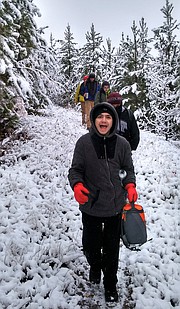Zinke proposes increasing Glacier Park entrance fees
The National Park Service Oct. 24 announced it was proposing to more than double entrance fees to several national parks, including Glacier National Park, to pay for deferred maintenance.
Under the proposal, during the peak season the entrance fee would be $70 per private, non-commercial vehicle per week, $50 per motorcycle, and $30 per person on bike or foot. An annual pass would cost $75. Currently the entrance fee to Glacier is $30 for a seven-day pass at peak season for a car and $25 for a motorcycle. The annual pass is $50. The current walk-in rate is $15 per person.
Glacier earlier this year had proposed hiking the annual pass to $60.
“The infrastructure of our national parks is aging and in need of renovation and restoration,” said U.S. Secretary of the Interior Ryan Zinke in a release. “Targeted fee increases at some of our most-visited parks will help ensure that they are protected and preserved in perpetuity and that visitors enjoy a world-class experience that mirrors the amazing destinations they are visiting. We need to have the vision to look at the future of our parks and take action in order to ensure that our grandkids’ grandkids will have the same if not better experience than we have today. Shoring up our parks’ aging infrastructure will do that.”
President Donald Trump’s proposed budget earlier this year slashed the federal government’s contribution to the Park Service.
Trump’s budget would have cut about $800,000 from Glacier’s budget. Congress has yet to pass a spending plan for 2018.
The proposed new fee structure would be implemented at Arches, Bryce Canyon, Canyonlands, Denali, Glacier, Grand Canyon, Grand Teton, Olympic, Sequoia and Kings Canyon, Yellowstone, Yosemite, and Zion National Parks with peak season starting on May 1, 2018; in Acadia, Mount Rainier, Rocky Mountain, and Shenandoah National Parks with peak season starting on June 1, 2018; and in Joshua Tree National Park as soon as practicable in 2018.
A comment period on the peak-season entrance fee proposal will be open until Nov. 23 on the NPS Planning, Environment
and Public Comment (PEPC) website https://parkplanning.nps.gov/proposedpeakseasonfeerates. Written comments can be sent to 1849 C Street, NW, Mail Stop: 2346 Washington, DC 20240.
If implemented, estimates suggest that the peak-season price structure could increase national park revenue by $70 million per year. That is a 34 percent increase over the $200 million collected in Fiscal Year 2016. Under the Federal Lands Recreation Enhancement Act, 80 percent of an entrance fee remains in the park where it is collected. The other 20 percent is spent on projects in other national parks.
The National Parks Conservation Association was quick to criticize the proposal.
“We should not increase fees to such a degree as to make these places – protected for all Americans to experience – unaffordable for some families to visit. The solution to our parks’ repair needs cannot and should not be largely shouldered by its visitors,” said Theresa Pierno, President and CEO of the NPCA. “The administration just proposed a major cut to the National Park Service budget even as parks struggle with billions of dollars in needed repairs. If the administration wants to support
national parks, it needs to walk the walk and work with Congress to address the maintenance backlog.”
On Monday, Sen. Jon Tester came out against the proposal, saying, “Americans own these parks and they shouldn’t have to empty their wallets to gain access and enjoy them.
“I am concerned this fee increase will price Montana families out of our public lands and undercut our growing outdoor economy.”





